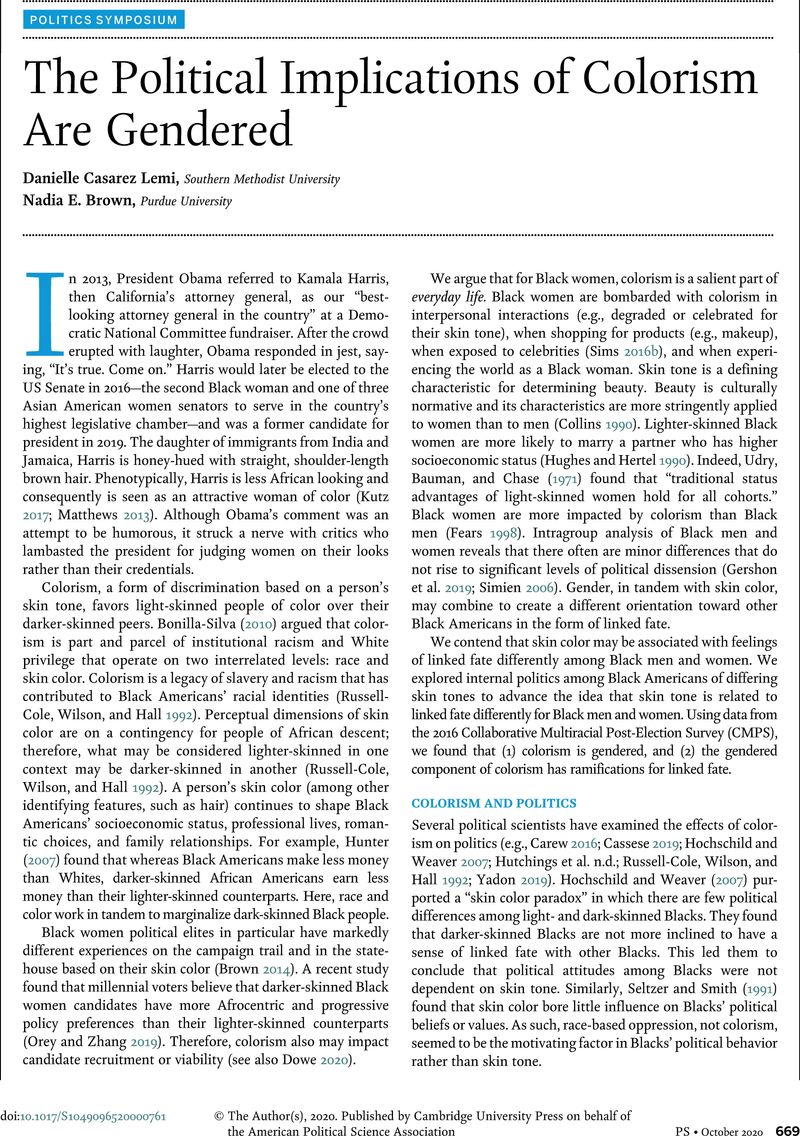Crossref Citations
This article has been cited by the following publications. This list is generated based on data provided by Crossref.
Lizotte, Mary Kate
and
Carey, Tony E.
2021.
Minding the Black Gender Gap: Gender Differences in Public Opinion among Black Americans.
American Politics Research,
Vol. 49,
Issue. 5,
p.
490.
Lemi, Danielle Casarez
Arora, Maneesh
and
Sadhwani, Sara
2022.
Black and Desi: Indian American Perceptions of Kamala Harris.
Journal of Women, Politics & Policy,
Vol. 43,
Issue. 3,
p.
376.
Stamps, Danielle
Stepanova, Elena V.
and
Chi, Jinhao
2022.
The Effects of Skin Tone on the Perception of Discrimination in Young African American Women.
Journal of Ethnic and Cultural Studies,
Vol. 9,
Issue. 1,
p.
161.
Lemi, Danielle Casarez
and
Brown, Nadia E.
2022.
Sister Style: Response from the Authors.
Journal of Women, Politics & Policy,
Vol. 43,
Issue. 3,
p.
423.
Brown-Foster, Walton
2023.
Identity Politics in US National Elections.
p.
19.
2023.
Kunst, Jonas R.
Kirkøen, Jannicke
and
Mohamdain, Onab
2023.
Hacking attractiveness biases in hiring? The role of beautifying photo-filters.
Management Decision,
Vol. 61,
Issue. 4,
p.
924.
Love, Ta’Les
2025.
The Disaggregation of Platform Labor: Theorizing Skin Tone Work in the Black Influencer Beauty Economy.
Social Media + Society,
Vol. 11,
Issue. 1,



